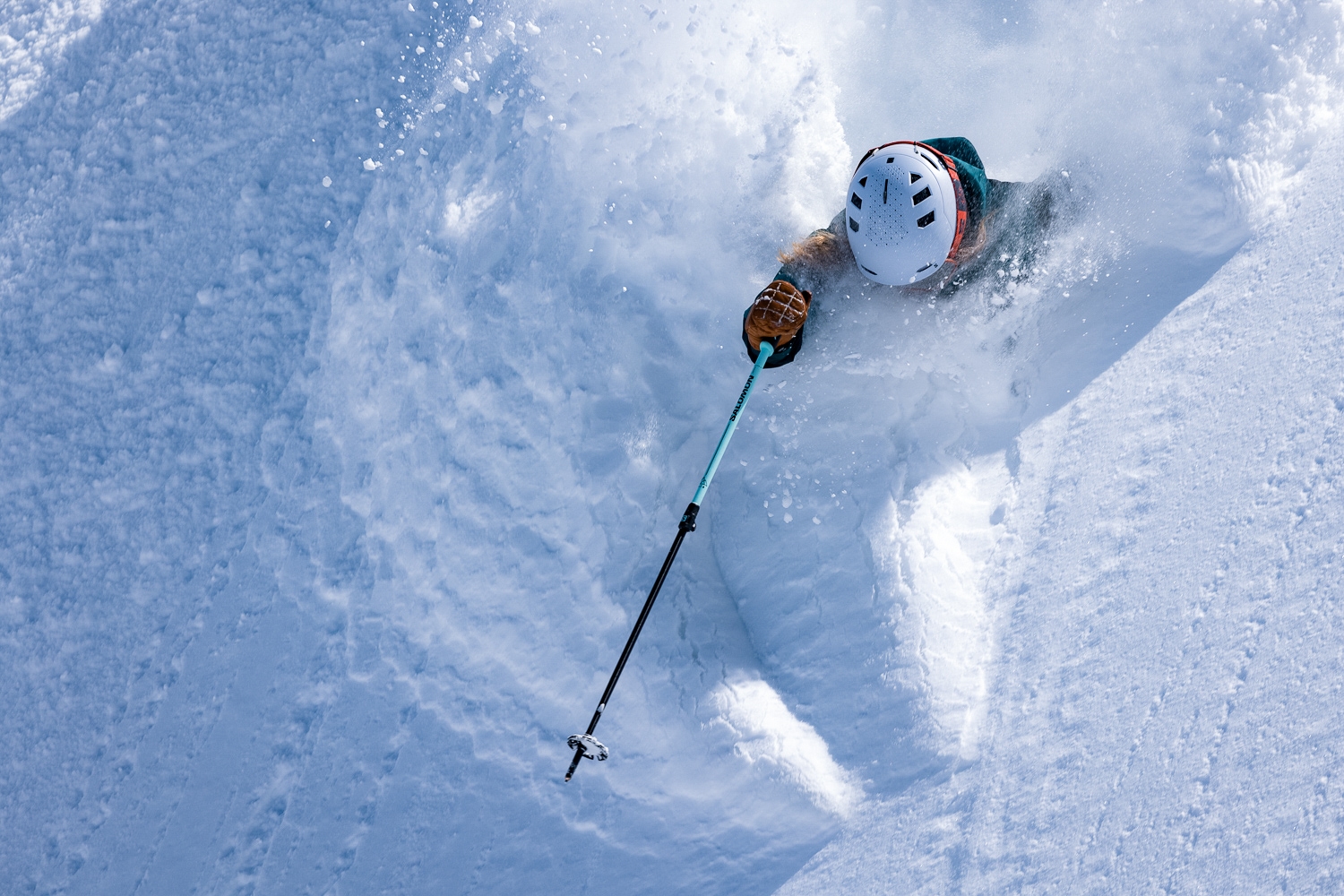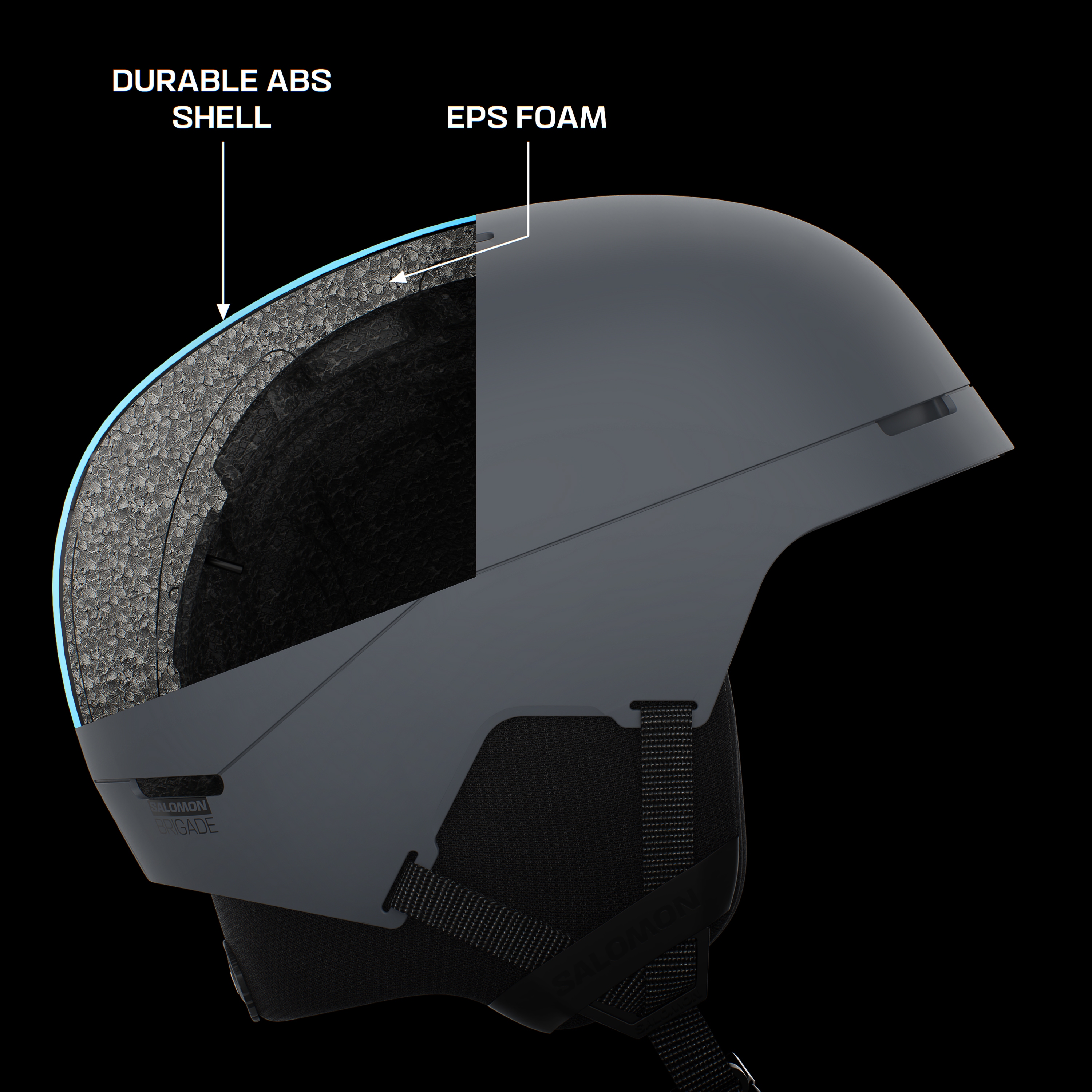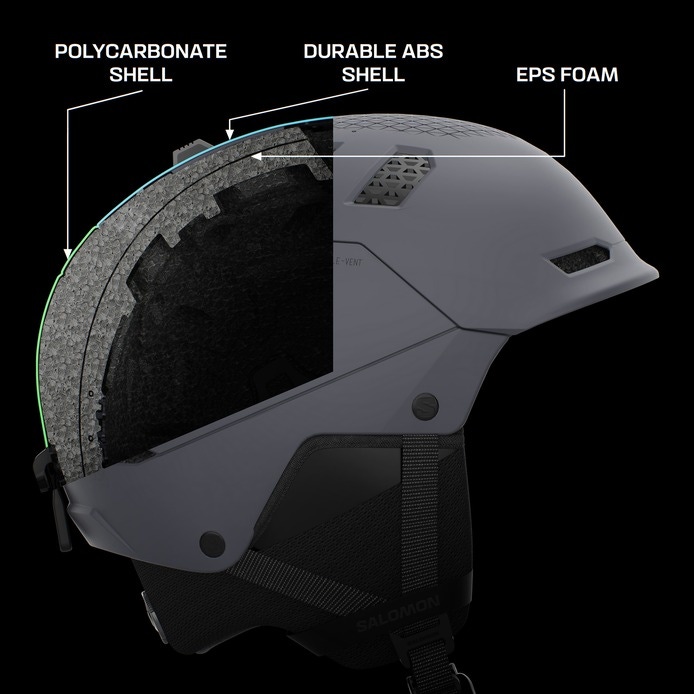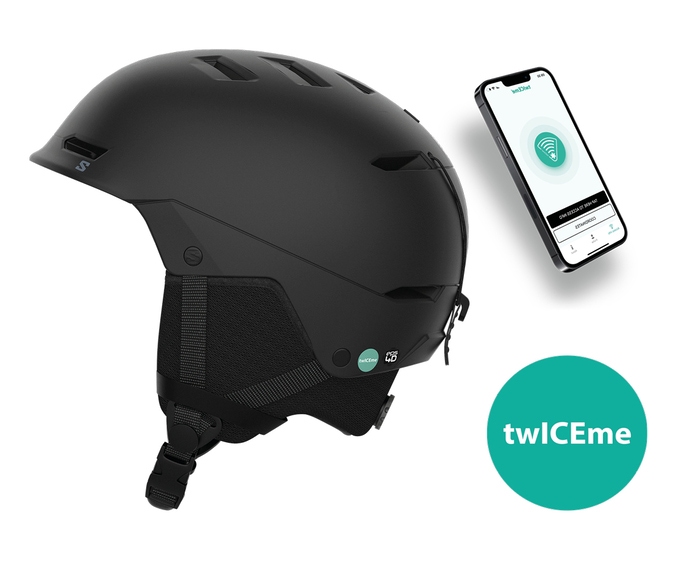A ski or snowboard helmet is essential safety gear that has been widely adopted across all disciplines of each sport. In order to get one that provides the best protection with the most comfort it’s important to choose wisely. Here’s what we recommend.
Helmets designed for a specific use
There’s no technical difference between a ski helmet and a snowboard helmet. So whether you choose a ski or a snowboard helmet is a question of aesthetics more than anything. A ski helmet works perfectly well for snowboarding and vice versa.
Our men’s helmets | Our women’s helmets
Regardless of whether you ski or snowboard, you need to choose a helmet that’s specifically designed for your intended use:
- Resort skiing: these are the most versatile helmets with features to match your needs – adjustable ventilation, audio system, etc. – and budget.
- Freeride, backcountry: so lightweight and well-ventilated you’ll forget you’re wearing it on the approach as well as during the descent.
- Backcountry skiing, ski touring, ski mountaineering: ultralight and well-ventilated helmets to keep you from overheating on the way up. Some of these helmets comply to the climbing and mountaineering standard (EN 12492) in addition to the ski standard.
- Freestyle: stylish, highly impact-resistant helmets that are designed and developed specifically for freestyle riding both on and off the slopes.
- Competitive skiing: these FIS-approved helmets are specially designed to provide aerodynamic protection adapted to each discipline. (Read our article about all the alpine ski disciplines).


How to choose the right size helmet
To choose the right size helmet you should do two things:
1- Measure your head
To do this, you can go to a ski shop and use their special head measuring tool, or you can measure your head using a tape measure by running it 1cm (about a half inch) above your brow bone and just above your ears.
You now know your adult helmet size (generally):
- XS: 48-53cm (19-21”)
- S: 53-56cm (21-22”)
- M: 56-59cm (22-23”)
- L: 59-62cm (23-24.5”)
- XL: 62-64cm (24.5 - 25”)
The sizes for kids’ helmets are generally:
- S: 48-53cm (19-21”)
- M: 53-56cm (21-22”)


For a helmet to be the right size, the tightening system shouldn’t be maxed out on either end. In other words, the system shouldn’t be fully tightened or fully loosened when the helmet is sitting in the right place and comfortable.
2- Try different helmets
It’s important to try several helmet models to make sure you choose the one that is the most comfortable and secure.
Our men’s helmets | Our women’s helmets
The helmet should feel as though it fits your head perfectly, it should be held in place without being too tight and it shouldn’t have any pressure points.
A quick test is to move your head up and down and left and right without closing the chin strap. A helmet that fits well will stay in place and always cover your forehead.
Men’s and women’s sizes are the same. Only the aesthetics and interior fabrics are different.
If you have ski goggles, check to see if they fit with the helmet. Your goggles should conform to the shape of the helmet to prevent cold air and snow from entering. If you need to pick up a pair of goggles, you should first read our article on how to choose your ski goggles.
Helmet technology
All ski and snowboard helmets must conform with standard CE-EN1077 (European standard) or ASTM F-2040 (North American standard). Helmets that meet these standards are guaranteed to provide the same basic level of protection, regardless of construction: ABS, in-mold or hybrid.
Different types of helmet construction


ABS helmets
Ski helmets made of injected ABS (Acrylonitrile Butadiene Styrene) consist of an outer shell of hard ABS plastic with an EPS (Expanded Polystyrene) protective foam glued inside. ABS helmets are highly impact resistant but are a bit heavier. This is the most common technology used to make solid and durable helmets with good protection at a competitive price.


In-mold helmets
An in-mold helmet consists of a very thin polycarbonate outer shell that’s molded directly onto the inner EPS foam. This results in a very light and compact ski helmet.


Hybrid helmets
Hybrid helmets combine ABS injection on the upper part of the helmet and in-mold construction on the lower part. This provides a good compromise between light weight, impact resistance, and protection for both skiing and snowboarding.
Safety technology
MIPS technology
Some helmets are equipped with MIPS technology, which features a low-friction layer that allows 10-15mm of multidirectional movement in the event of an impact, and most notably, bias impact. This provides better protection for the brain by considerably reducing the rotational force. This additional technology raises the price of the helmet and so it is mainly found on high-end models.



TWICEME technology
twICEme is a technology integrated directly into some helmets allowing access to vital information in case of an accident. Simply place an NFC-enabled smartphone on the twICEme logo to access recorded information (medical information, emergency contact information, insurance information, etc.).
The Different Parts of a Helmet
Most our helmets are designed and developed to suit the specific needs of different snow sports. As a result, features like the helmet's finish, comfort and ventilation determine the primary use of the helmet as well as the final price.
Ventilation
Strategically placed openings in the helmet's shell along with channels built in the EPS provide ventilation that helps ensure a uniform temperature and continuous air flow between the head, helmet and goggles. Some helmets feature adjustable ventilation that enables you to easily regulate the amount of air that flows in and out, even with gloves on.


Adjustment systems
Many helmets feature a dial at the back of the helmet that makes it possible to precisely adjust the helmet's fit. The BOAⓇ cable system provides micrometric adjustment that tightens the helmet evenly around your entire head.
The inner lining
The quality of the lining makes a big difference as to the ultimate comfort of the helmet and its durability. The liners in most helmets are detachable and washable.
Integrated visor
A visor integrated into the helmet is a feature originally designed for those who wear glasses. However, it appeals to a large number of skiers because it is so practical.
The integrated visor is also popular with kids who like it because they don’t have to hassle with goggles in addition to all the rest of their ski gear.
When trying a visor helmet on, be sure to properly adjust the tightening knob and chinstrap before lowering the visor to make sure the helmet is properly secure.
As with goggle lenses, visors are available in different categories ranging from 1 for bad weather to 3 for sunny days. There are also photochromic visors, which deliver a 2-in-1 solution by automatically becoming lighter or darker depending on the surrounding light.














